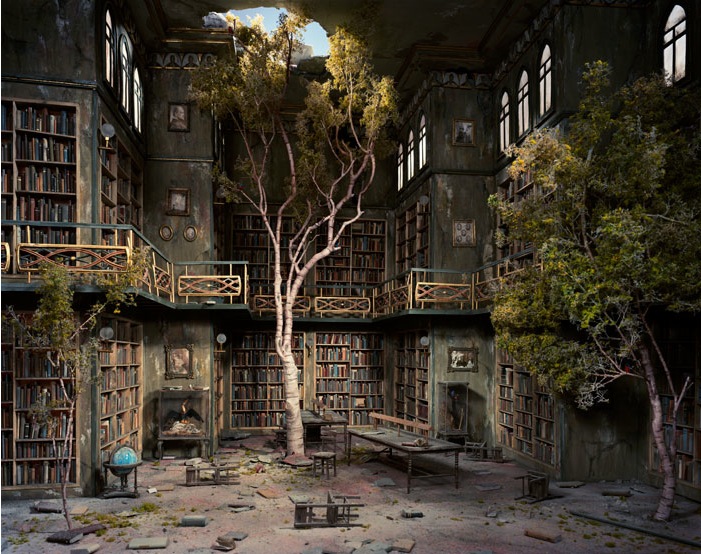
Opet su donedavno-ljudski prostori napušteni. Artificijelni, glamurozni ruin porn. Dandy-postapokalipsa.
www.lorinix.net/index.html
Lori's blog
This just about combines two of the most fascinating things to me; miniature art and the depiction of post-apocalyptic world. Photographer Lori Nix is clearly not your average photographer. Rather than going out and looking for her subjects, Lori builds her own by hand which can take up to 7 months each. Her scenes can be as small as 50×60 centimeters or as large as 182 centimeters in diameter.
Delve into her incredible miniature world …
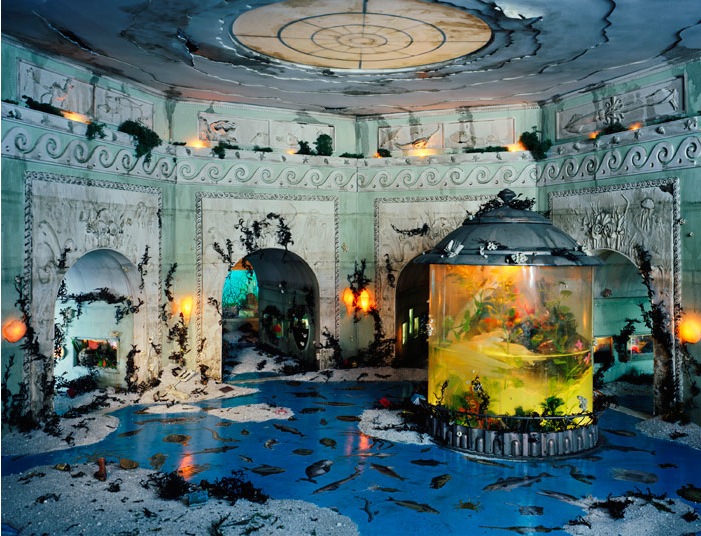

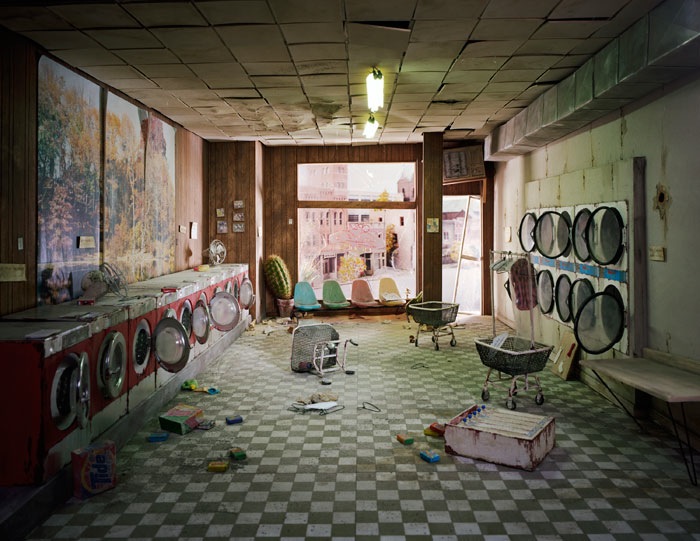
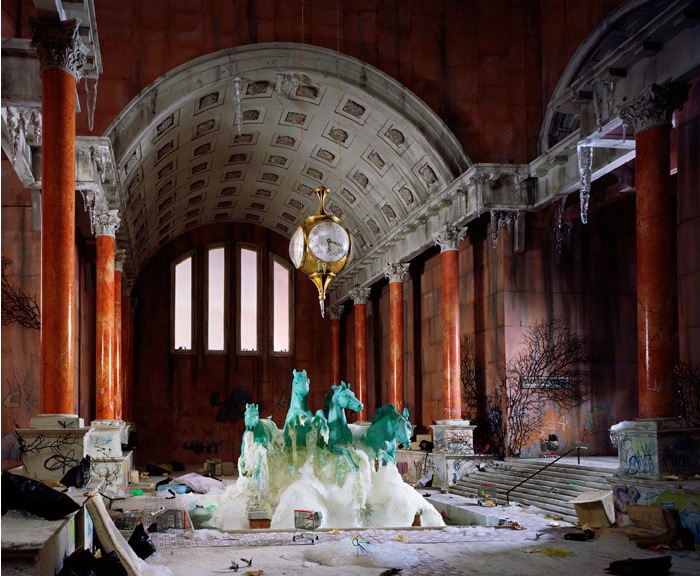
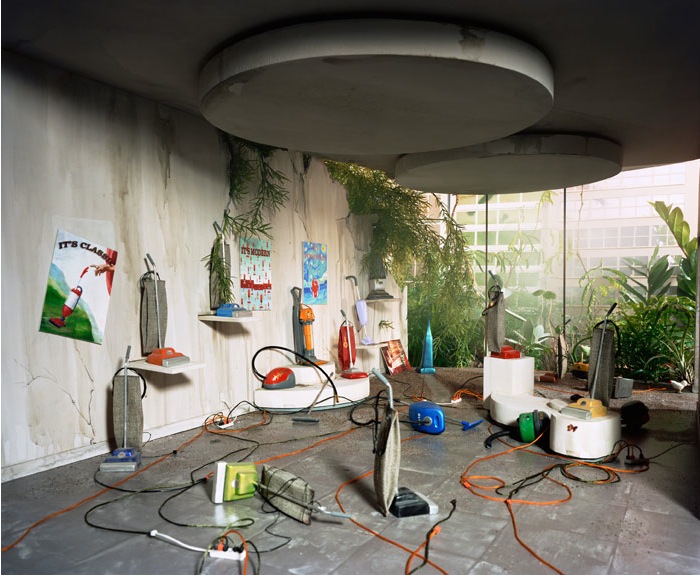
“I am interested in depicting danger and disaster, but I temper this with a touch of humor. My childhood was spent in a rural part of the United States that is known more for it’s natural disasters than anything else. I was born in a small town in western Kansas, and each passing season brought it’s own drama, from winter snow storms, spring floods and tornados to summer insect infestations and drought. Whereas most adults viewed these seasonal disruptions with angst, for a child it was considered euphoric.”
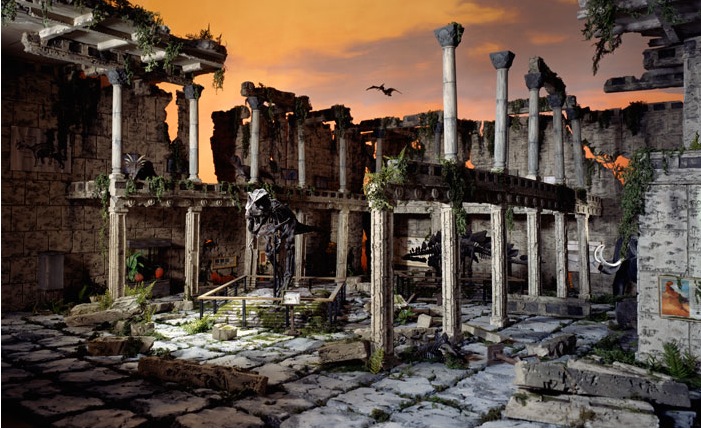

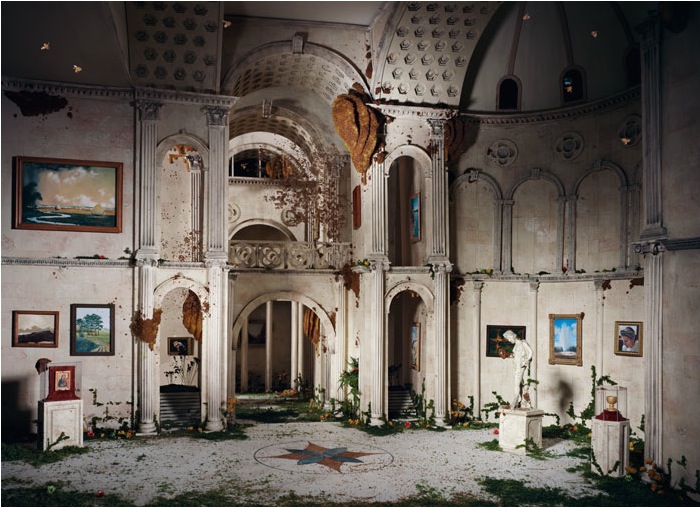
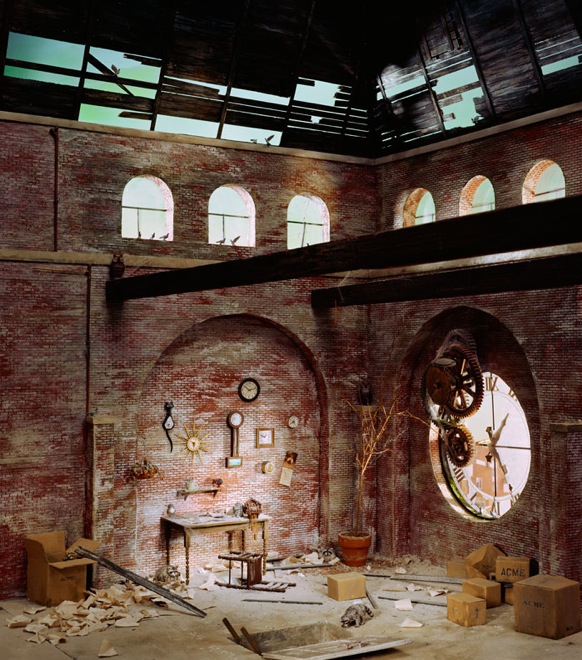
“In my newest body of work ‘The City’ I have imagined a city of our future, where something either natural or as the result of mankind, has emptied the city of it’s human inhabitants. Art museums, Broadway theaters, laundromats and bars no longer function. The walls are deteriorating, the ceilings are falling in, the structures barely stand, yet Mother Nature is slowly taking them over. These spaces are filled with flora, fauna and insects, reclaiming what was theirs before man’s encroachment. I am afraid of what the future holds if we do not change our ways regarding the climate, but at the same time I am fascinated by what a changing world can bring”.

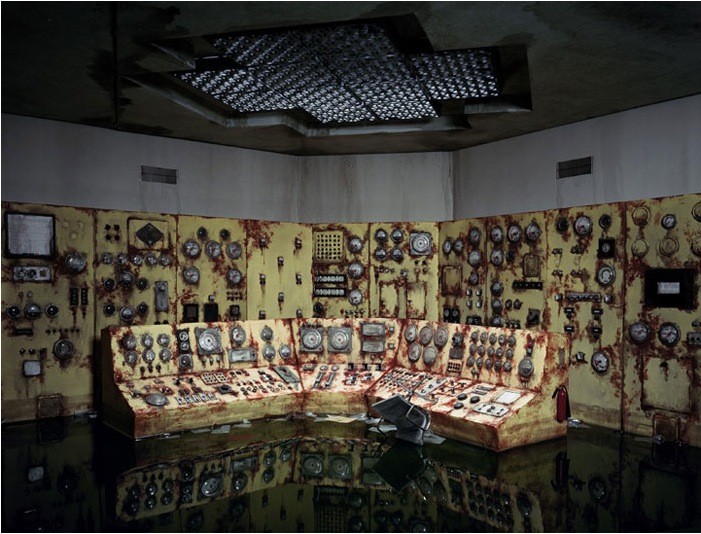

www.messynessychic.com/









Unnatural History







Lost






Some Other Place










Accidental Kansas



I am often asked questions about the inspiration for my work as well as my working process. As a ‘non-traditional’ photographer (I construct my subject matter rather than go find it) people find it hard to grasp what exactly it is that I do. And the fact that it is all done in front of the camera, with no digital manipulation, adds its own set of challenges. Building materials, lighting, issues of scale and space all become significant when you are recreating the world on a table top. I've listed a few of the more frequently asked questions and my responses. Hope you enjoy.
1. Are there any art periods or styles that have influenced you? And how would you describe your own style?
2. We find that your works display a world between reality and illusion, it's reflective. What is the reason for you to present the world in this way? Could you share your aesthetic or philosophy about your work?
I am greatly influenced by landscape painting, particularly the Hudson River School of Painting which included the artists Thomas Cole, Asher Brown Durand, Frederich Edwin Church, Martin Johnson Heade, and the Romantic painter Casper David Friedrich. Each of these painters possessed characteristics of romanticism and the Sublime and it's ability to create a state of mind and express intense emotions either through beauty or horror. Eighteenth century philosophers such as Burke and Kant wrote of phenomena that could excite sublime feelings when considering natural settings, dangerous situations, the unknown, and anything else that can threaten us or our belief that we live in a friendly and predictable universe that is under our control. The Sublime as a school of thought came to full force in the eighteenth century and was illustrated by these painters' grandiose landscapes. When one views these beautiful depictions of landscape, one immediately sees God in all his glory and is filled with awe and/or terror by His majesty. In contemporary art, the Sublime manifests itself in many different ways and in many different forms, but it is trying to achieve the same effect, the evocation of profound emotion. The painters Barnett Newman and Mark Rothko employed styles of Abstract Expressionism to move the viewer. The photographer Andreas Gursky takes pictures of enormous spaces that continue on beyond the perceivable horizon, confronting the viewers with feelings of unease and smallness. In my own work, I create photographs that depict our failing future and the demise of humanity, though I temper it with subtle humor.
I am interested in depicting danger and disaster, but I temper this with a touch of humor. My childhood was spent in a rural part of the United States that is known more for it's natural disasters than anything else. I was born in a small town in western Kansas, and each passing season brought it's own drama, from winter snow storms, spring floods and tornados to summer insect infestations and drought. Whereas most adults viewed these seasonal disruptions with angst, for a child it was considered euphoric. Downed trees, mud, even grass fires brought excitement to daily, mundane life. As a photographer, I have recreated some of these experiences in the series "Accidentally Kansas".
In my newest body of work "The City" I have imagined a city of our future, where something either natural or as the result of mankind, has emptied the city of it's human inhabitants. Art museums, Broadway theaters, laundromats and bars no longer function. The walls are deteriorating, the ceilings are falling in, the structures barely stand, yet Mother Nature is slowly taking them over. These spaces are filled with flora, fauna and insects, reclaiming what was theirs before man's encroachment. I am afraid of what the future holds if we do not change our ways regarding the climate, but at the same time I am fascinated by what a changing world can bring.
3. What materials, tools and techniques do you use? What is your working process?
4. Would you please talk about your series "The City"? What inspired you to create this series?
I began my photography career in college, working for the college newspaper. I started out as the darkroom printer and eventually became the photo editor. As the editor, it became quickly obvious that I was not much of a photojournalist. I didn't have the gift of being at the right place to capture breaking news. I'm also horrible at portraiture as I am unable to capture the essence of the sitter. In college I studied ceramics and photography. With ceramics, you're always building the object from scratch. This translated well in my photo studies, where my desire was to construct the image rather than find an existing one. Since my earliest days I have always worked with fabrication, either through darkroom manipulations or even room sized installations. My strength lies in my ability to build and construct my world rather than seek out an existing world. Inspiration comes from reading the daily newspaper The New York Times, science fiction paperbacks and magazine articles. I get most of my ideas during my morning subway commute from Brooklyn to Manhattan to go to my day job. Something about the morning light, the rocking of the subway, seeing the cityscape pass by opens my mind up to inspiration. I then research my ideas on the internet, buy reference books, then start sketching out the diorama. Sometimes I let months pass before beginning work, other times I start immediately. It all depends on how fully defined the image is in my head. Sometimes I see the final image immediately, other times I do a lot of research before committing to building the model.
In my earliest work "Accidentally Kansas" I relied heavily upon manufactured models for railroad hobbyists. I used a shallow depth of field to give it a dreamy quality, like the fuzziness of memories. It also helped to hide my lack of good painting skills. Building landscapes was still new to me then.
The scenes I build today are mostly made by hand. There is usually one element I do not feel like creating, such as the piano in "Majestic". I found the piano and then scaled the rest of the scene around it. The size of the piano determined the size of the diorama. My scenes can be as small as 50x60 centimeters and as large as 182 centimeters in diameter. It takes approximately seven months to build and photograph a scene. I build it for one angle of view and never move my camera from that spot. I will change the lighting, the placement of the objects and re-shoot until I'm fully satisfied with the results. I shoot with an 8x10 large format camera and film. I print my own photographs quite large.
I have been building dioramas and photographing the results since the early 1990s. As I've working through various bodies of work, from Accidentally Kansas, Lost and now The City, my fabrication skills have improved and my subject matter has become more complex. With The City series I have moved indoors, creating architectural interiors. This has proven most difficult yet most rewarding. Currently it takes about seven months to build a scene and two to three weeks to shoot the final image. I build these in my Brooklyn living room. I have miniature power tools throughout the apartment, a chop saw under the kitchen table, a miniature table saw on top. The computer room doubles as a model mock-up room. There are two of us who work on them, myself and my partner Kathleen. We split the work according to our strengths. I come up with the concept, the color palette and the lighting scenarios. I build the structures out of extruded foam and glue and paint and anything else handy. Kathleen is trained as a glass artist, specializing in cast glass work. She can paint faux finishes and gild architectural details with gold leaf. After I'm done building the structure and painting it, she comes in and adds dirt and distresses the walls to make it look old and decrepit.
I am fascinated, maybe even a little obsessed, with the idea of the apocalypse. In addition to my childhood experiences with natural disasters, I also grew up watching 1970s films known as "disaster flicks". I remember watching Towering Inferno, Earthquake, Planet of Apes and sitting in awe in the dark. Here was the same type of dangers I had experienced day to day being magnified and played out on the big screen in a typical Hollywood way. Each of these experiences has greatly influenced my photographic work. The series Accidentally Kansas explored my personal experience with the natural disasters of my childhood. The City postulates what it would be like to live in a city that is post man-kind, where man has left his mark by the architecture, but mother nature is taking back these spaces. Flora, fauna and insects mix with the detris of high and low culture.
5. Which image is your favorite?
"Floater" is one of my favorite scenes to date. The viewer sees a dead body floating face down in the shallow waters, tangled amongst cattails and weeds. What I see is cardboard transformed into long leaves, cattails sculpted from polymer clay with my fingerprints still visible, and paper towel, carefully folded and painted to resemble a figure. All the elements came together to illustrate a grey, overcast, slightly rainy day, the kind of day one might stumble onto an unfortunate event. I really enjoy how this image came together to give the viewer a sense of unease, yet it's humorous if you pick the scene apart and see the materials used to construct it.
6. In your opinion, what are the most important things (whether bad or good) that photography should offer/convey to viewers?
Photography is very subjective and every person will come away with something different from the same picture. My personal opinion is that photography should elicit some form of emotion in the viewer, be it awe, anger, or humor. Photography should also introduce the viewer to a new perspective.
7. What's your creating plan in the future?
I have been working on The City series since 2005 and will probably continue this for another three or four years. I have so many scenes I want to build. I still find them challenging and rewarding. I'm also working on a black and white series called Unnatural History, a behind the scenes look into the workings of the Natural History Museum, where all is not so scientific. I work on these images fast, spending about a week on each scene. It livens up the rather slow pace of the color work. - www.lorinix.net/about.html
Nema komentara:
Objavi komentar